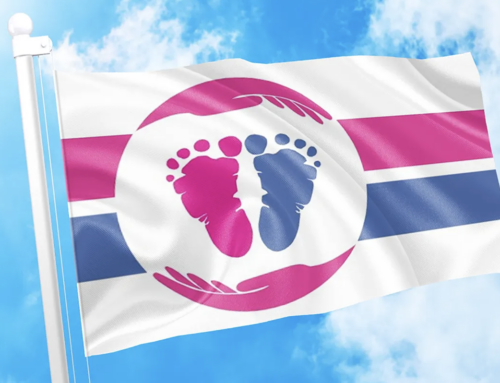Joe Borowski’s case began in 1978 when he applied to the court for a declaration that would give unborn children full legal protection. Specifically Borowski sought a ruling that the 1969 amendments to section 251 of the Criminal Code are unconstitutional and invalid, renowned civil rights lawyer Morris Shumiatcher was retained by Borowski to argue his case. The lawyers for the federal government sought to have the case dismissed on technicalities before there was any opportunity to argue the substantial issue involved.
The Crown issued two procedural challenges which stalled the hearing of the case for five years. First, it argued that Borowski had brought his application to the wrong court. The application had been made to Saskatchewan Provincial Court of Queen’s Bench and the Crown argued that it rightfully belonged in the Federal Court. Borowski fought that challenge all the way up to the Supreme Court of Canada, which decided in his favor.
Having lost that battle, the federal government then challenged Mr. Borowski’s right to even apply for such a declaration. The Crown argued that Borowski did not have legal standing , that he did not have any direct interest in the matter, and should therefore be prevented from challenging the validity of the law. Once again the argument worked its way up to the Supreme Court which again ruled in Borowski’s favor. The court ruled that Borowski should be allowed to challenge the law because “unborn human fetuses” are directly affected by the law but are incapable of bringing such an application on themselves. Central to the court’s decision was the fact that if no one such as Borowski were allowed to challenge the law, then the law’s validity should never be challenged.
Finally, in May 1983, the case went to trial in a Regina court presided over by Mr. Justice Matheson. Originally, Borowski sought to challenge the law on the basis that it was an abrogation of the right to life, contained in the Diefenbaker Bill of Rights. During the time that the Crown was making procedural challenges, the Charter of Rights was brought into being. That legalization of abortion abrogated right guaranteed in the Charter, became the cornerstone of Schumiatcher’s argument before the court. In section 7, the Charter acknowledges that: “Everyone has the right to life.. and the right not to be deprived thereof except in accordance with principle of fundamental justice.” A law which allows unborn children to be killed, Shumiatcher argued, contravenes that right to life. The case also relied on section 15 of the Charter which states that “everyone has equal protection under the law.”
When the trial began, Morris Shumiatcher referred to it as “the most important since the Louis Riel trial.” The most exciting part of the trial was the expert evidence which was called, establishing the humanity of the unborn child. Renowned experts in gynecology and fetology were called by Shumiatcher to set out the scientific evidence which establishes beyond any doubt that the child in the womb is indeed a human being. The experts include: Sir William Liley of New Zealand, who was knighted for his pioneering work in amniocentesis; Dr. Jerome Lejeune, Professor of Fundamental Genetics at the University of Paris, the discoverer of the genetic cause of Down ’s syndrome; and Dr. Bernard Nathanson, the former pro-abortion activist and one-time director of the world’s largest abortion clinic.
Two years later
Judge Matheson decided against Borowski, stating that “everyone” I the Charter did not include unborn children. The judge did make some startling and hopeful findings. He found as a fact, established by the evidence presented at trial, that human life begins at conception and that the unborn child has a distinct identity.
The matter was appealed by Borowski to the Saskatchewan Court of Appeal; and the case was heard in the fall of 1985 by a panel of three judges. The Court took almost two years after hearing the arguments before rendering its decision. The Appeal Court upheld the decision of judge Matheson, deciding as he did, that the term “everyone” when used in the Charter does not include unborn children regardless of the scientific evidence concerning the humanity of the child in the womb.
Legal fiction
The decisions of the trial judge and the Court of Appeal seem anomalous: in each case accepting the humanity of the unborn child, but rejecting giving them any rights. To understand how the court could reach such a conclusion, one must be aware of long standing principle of law. In common law only “legal persons” are capable of having any legal rights. And a legal person is not the same as a human being. Thus corporations are “legal persons” and as such have legal rights. A legal person is simply anyone, or any member of a group of individuals that the court decides to call a “legal person.” For centuries, unborn children have been considered persons only from moment of birth. As the scientific evidence about the nature of life in the womb increases, this legal fiction becomes more and more absurd.
What the Court said:
On the right to life:
“To deprive a person of his life is the most radical deprivation of rights and the most flagrant violation, absent with out adherence to the fundamental principles of justice, of the values and traditions of our society.”
On whether the term “everyone” includes unborn children:
“I must thus conclude that the historic treatment of the fetus in Anglo-Canadian law has not been as a person or a part of “everyone” and that if such status were now to be accorded it would be novel.”
On whether the Charter protects unborn children:
“… it was not intended to make radical changes and the Charter was indeed intended to be neutral with respect to the subject of abortion ad the rights of a fetus.”
On the right of Parliament to make law governing abortion:
“The Charter is neutral in relation to abortion; it remains for Parliament, reflecting the will of the Canadian people , to determine without reference to the Charter in what circumstances the termination of a pregnancy will be lawful or unlawful.”



